Data Analytics Cost
1. Introduction
Understanding how much data analytics services cost is very important. Many organizations use data to guide their decisions. Knowing the data analytics cost can help you plan your budget and invest wisely. To do this effectively, consider the overall cost of data analytics services you may encounter. In this article, we will look at the main factors that affect pricing. We will also discuss different pricing models and show what you might expect to pay based on your business size. By the end, you will know how to evaluate these services and see if they are a good investment for your organization.
2. Factors Influencing the Cost of Data Analytics Services
The cost of data analytics services can vary widely. Here are some important factors that influence how much you will pay:
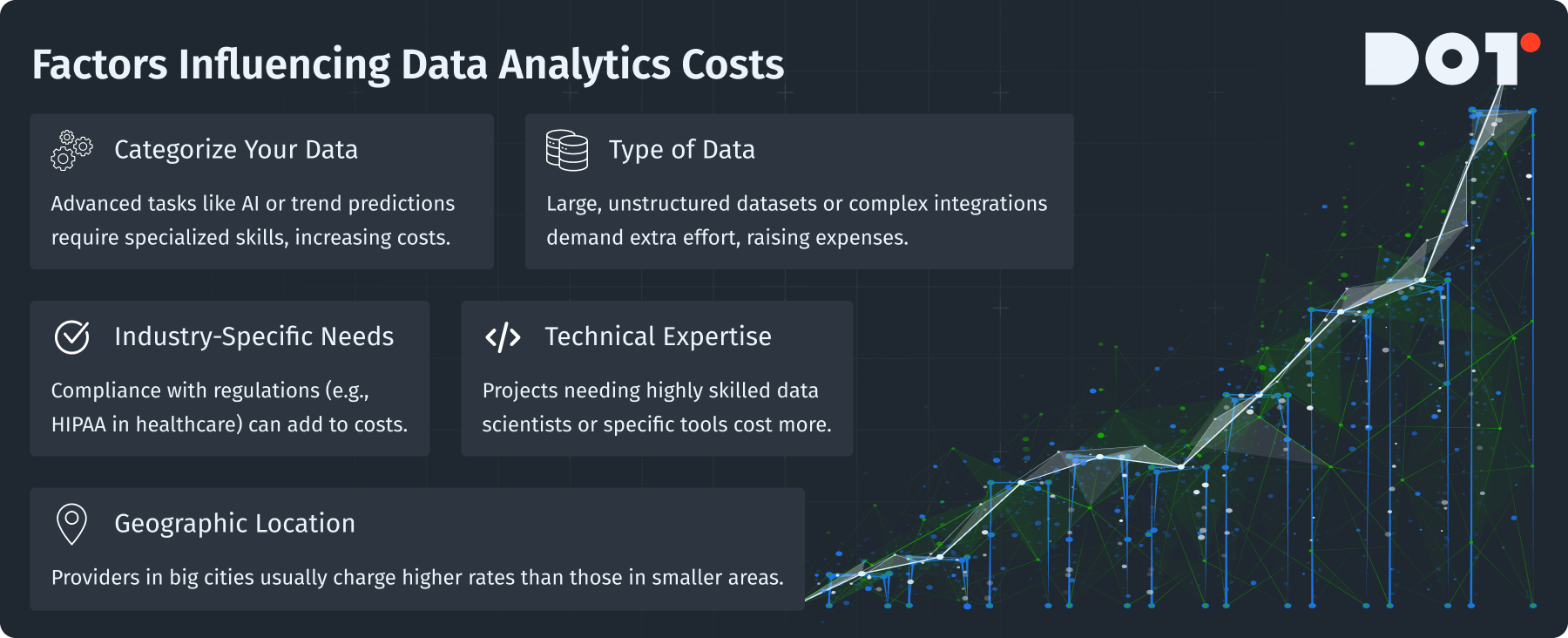
- Complexity of Analysis: The difficulty of the analysis plays a big role in costs. The higher the project’s complexity, the greater the data analytics cost can be. If you only need basic reporting, it will cost less. But if you want complex tasks, like predicting future trends, it needs more skills and resources, which can cost more. For example, using machine learning or artificial intelligence will require specialists and will raise the fees. A detailed understanding of data analytics pricing is essential to navigate these complexities effectively.
- Type of Data: The kind of data you have also matters. If you have large datasets or unstructured data (like text or videos), it can take more time and effort to analyze. Knowing the data analytics cost of handling large quantities of unstructured data can help you budget. Cleaning data—removing duplicates or fixing missing values—can add to costs too. Integrating data from different systems can also increase your expenses. As you consider these factors, be sure to utilize a data analytics cost calculator to help with accurate budgeting.
- Industry-Specific Requirements: Different industries have specific needs, especially regarding rules and regulations. For instance, healthcare must follow data privacy laws like HIPAA, which can increase costs because experts may need to understand these regulations. Understanding the cost of data analytics in such specialized industries is crucial for accurate budgeting. Additionally, many businesses struggle with budgeting for data analytics due to these varying requirements.
- Technical Expertise: Skilled data analysts are in high demand. If your project needs experts in specific tools or programming languages, it might be more expensive. For example, data scientists earn more than regular data analysts, which can raise the overall project costs. It’s essential to factor in the technical expertise when considering the overall data analytics cost for the project. This means thoroughly assessing the projected data analytics price breakdown to include these factors.
- Geographic Location: The location of the service provider is also important. In big cities, prices can be much higher than in smaller towns or rural areas. Therefore, understanding the data analytics cost based on location can influence your choice of provider. So, it’s wise to compare rates from different providers located in various areas. Many businesses also seek affordable data analytics solutions to mitigate these geographic cost differences.
3. Pricing Models for Data Analytics Services
Knowing different pricing models can help you choose the best option for your budget and needs.
Fixed vs. Variable Pricing Structures: Pricing models can affect your total costs, so pick one that fits your budget and project requirements.
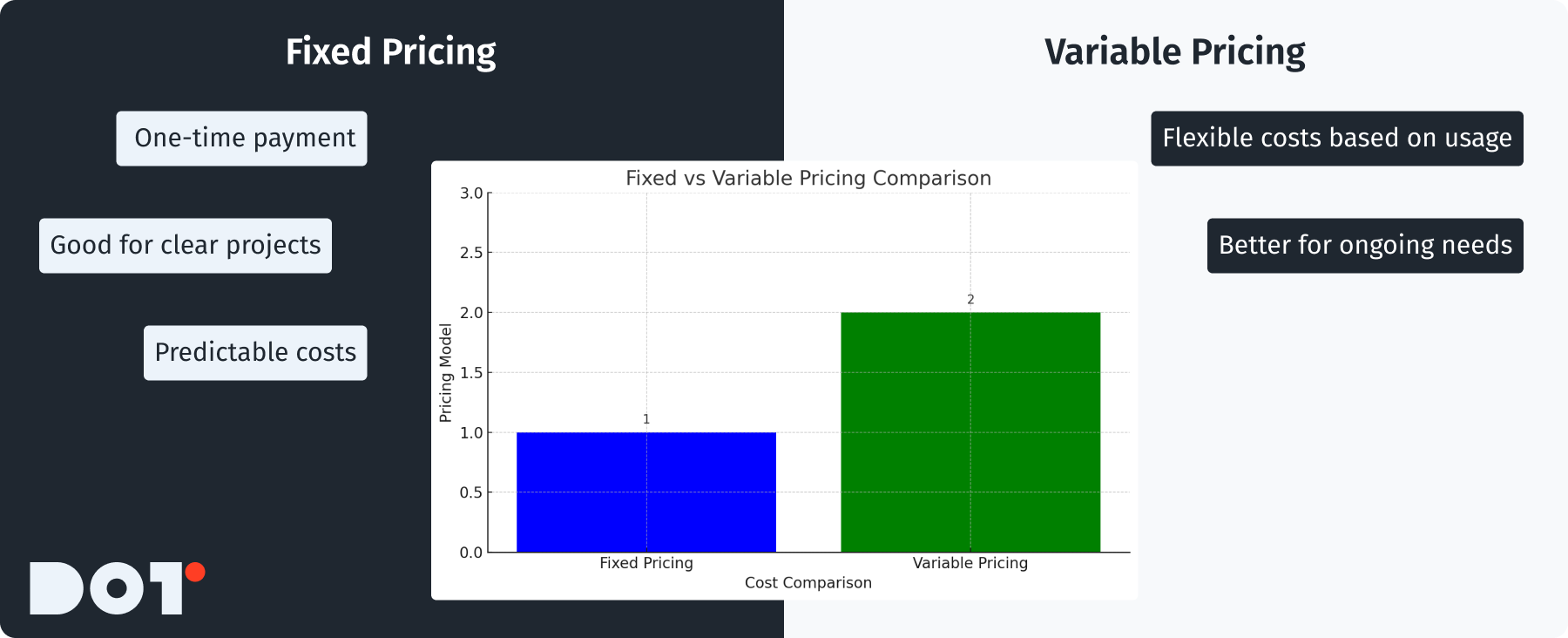
- Fixed Pricing:
This means paying a set price for the whole project. It works well if you have clear project details. For example, if you want to create a data dashboard with a one-time fee, this can be a good choice. Ensure you clarify the data analytics cost during the initial discussions to avoid any surprises. Make sure to outline your needs clearly to get the best price without any hidden surprises. Many organizations find that fixed pricing provides a clearer understanding of data-driven decision-making expenses. - Variable Pricing:
This means paying based on how many hours are worked or data processed. It is more flexible, which is useful for ongoing projects or changes. If you need regular data analysis, you pay for only what you use. For instance, if you want an ongoing report, paying hourly might be better. Be aware of how the variable pricing can influence your overall data analytics cost.
Do You Fully Understand the Topic? If Not, You Can Book a Free 15-minute Consultation with an Expert from Dot Analytics
If you’re still unsure about data analytics pricing models, reach out to professionals for personal advice tailored to your business situation. Expert help can make things clearer and help you decide better.
4. Average Cost Ranges Based on Business Size
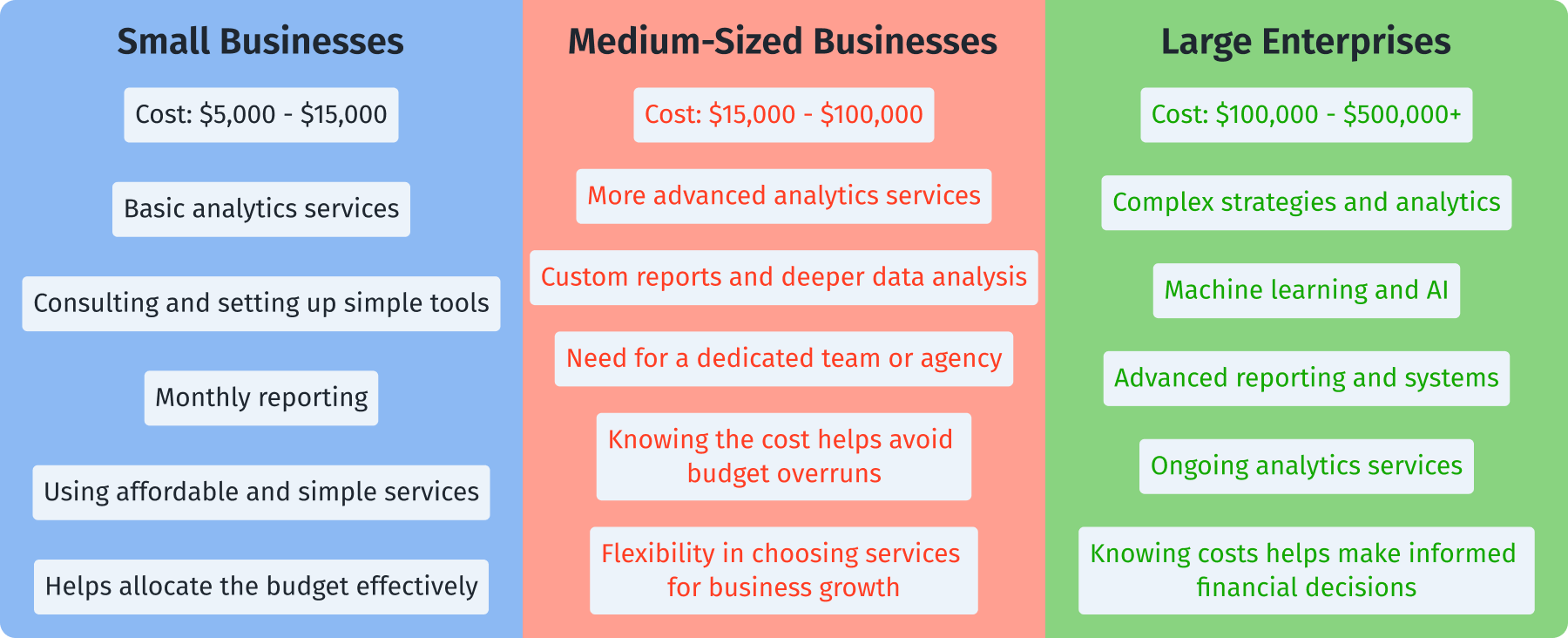
Costs also change depending on how big your business is and your specific analytics needs:
- Small Businesses: Small businesses usually spend between $5,000 and $15,000 on basic analytics services. These can cover consulting, setting up basic analytics software, and monthly reporting. They can often use simple analytics tools or choose lower-cost services designed for them. Understanding the cost of data analytics can help small businesses allocate their budgets effectively.
- Medium-Sized Businesses: Medium-sized businesses’ costs usually range from $15,000 to $100,000. These can include more advanced services, like custom reporting and deeper data analysis. They might need to hire a dedicated analytics team or a skilled agency to help with their data insights. Knowing the data analytics cost beforehand can ensure medium-sized businesses avoid budget overruns.
- Large Enterprises: Large businesses may start at $100,000 and could pay over $500,000 each year, especially if they require many ongoing data services. This often includes complex strategies, machine learning, and advanced reporting systems. As organizations grow, being aware of the data analytics cost helps in making informed financial decisions.
5. Evaluating the Investment in Data Analytics Services
When looking at data analytics services, think about how they can help boost your business success.
Potential ROI from Data Analytics
To see if data analytics is worth it, you can look at the potential return on investment (ROI). This means measuring the benefits you would get versus the costs. The formula for calculating ROI is simple:
ROI = (Net Profit from Data Analytics – Cost of Data Analytics) / Cost of Data Analytics * 100
For example, if the projected profit is $50,000 and the analytics cost is $20,000, the calculation would look like this:
ROI = (50,000 – 20,000) / 20,000 * 100
Doing the math gives us:
ROI = 30,000 / 20,000 * 100 = 150%.
This result shows that for every dollar spent on data analytics, you earn $1.50 back. When deciding to invest, think about how data analytics can help answer specific business questions and solve problems in your organization.
If you are unsure about how investing in data analytics can help, it’s smart to talk with an expert. A consultation can show you the benefits for your business and help you see if the investment aligns with your goals.
6. Typical Services Included in Data Analytics Packages
When hiring data analytics services, you usually get a set of specific services. Here are some common ones:

- Data Collection and Cleaning: This means gathering data from different sources, like databases and user feedback. Cleaning the data involves fixing errors and formatting it into usable forms. Understanding the data analytics cost related to these specific services is vital for effective budgeting.
- Data Visualization (Dashboards, Charts): This service helps present data insights well. Analysts create dashboards or reports using tools like Tableau or Power BI to clearly show findings and identify trends. Knowing the data analytics cost of visualization tools can aid in decision-making.
- Predictive Analytics: This goes beyond past data analysis and uses machine learning to predict future events based on historical information. The data analytics cost associated with predictive analytics can greatly vary depending on the complexity.
- Customer Segmentation Analysis: This helps businesses understand different customer groups for better-targeted marketing. Analysts look at various data to help define different segments, all of which impact the overall data analytics cost.
- Performance Measurement and Reporting: This is about tracking key metrics. Reports are made regularly to assess business successes and areas for improvement.
Remember to ask what services are included in any contracts you consider, as different companies offer different packages.
7. Budget-Friendly Options for Small Businesses
For small businesses with tight budgets, finding affordable analytics services can be tough. Here are some practical tips for finding better options:
- Freelancers or Smaller Firms: Hiring independent freelancers or smaller firms can save money compared to larger agencies. Websites like Upwork or Fiverr can help you find skilled analysts with strong reviews. Often, understanding the data analytics cost associated with freelancers can lead to significant savings.
- Scalable Services: Look for providers that offer flexible services. You can start small and add more complex analytics as your business grows or budget allows. Knowing potential data analytics cost increases can help in strategic planning.
- Tools and Software: Use affordable or free tools for basic analytics. Google Analytics is a good choice for no-cost tracking, and open-source tools like Python or R can help with basic needs as well.
8. Additional Costs to Anticipate
While you may understand the basic fees, watch out for extra costs that can come with hiring data analytics services:
Hidden Fees and Expenses
- Software Licenses: Remember to budget for software. Costs can vary between $100 for basic tools and thousands for more advanced platforms. Always check for annual renewal costs if using special software. The data analytics cost for licenses should be factored into overall service expenses.
- Training: If your team needs to learn how to use new tools, this can cost between $500 to $5,000. Training helps your team feel comfortable with new systems and improve their skills.
9. Case Studies
EduLink
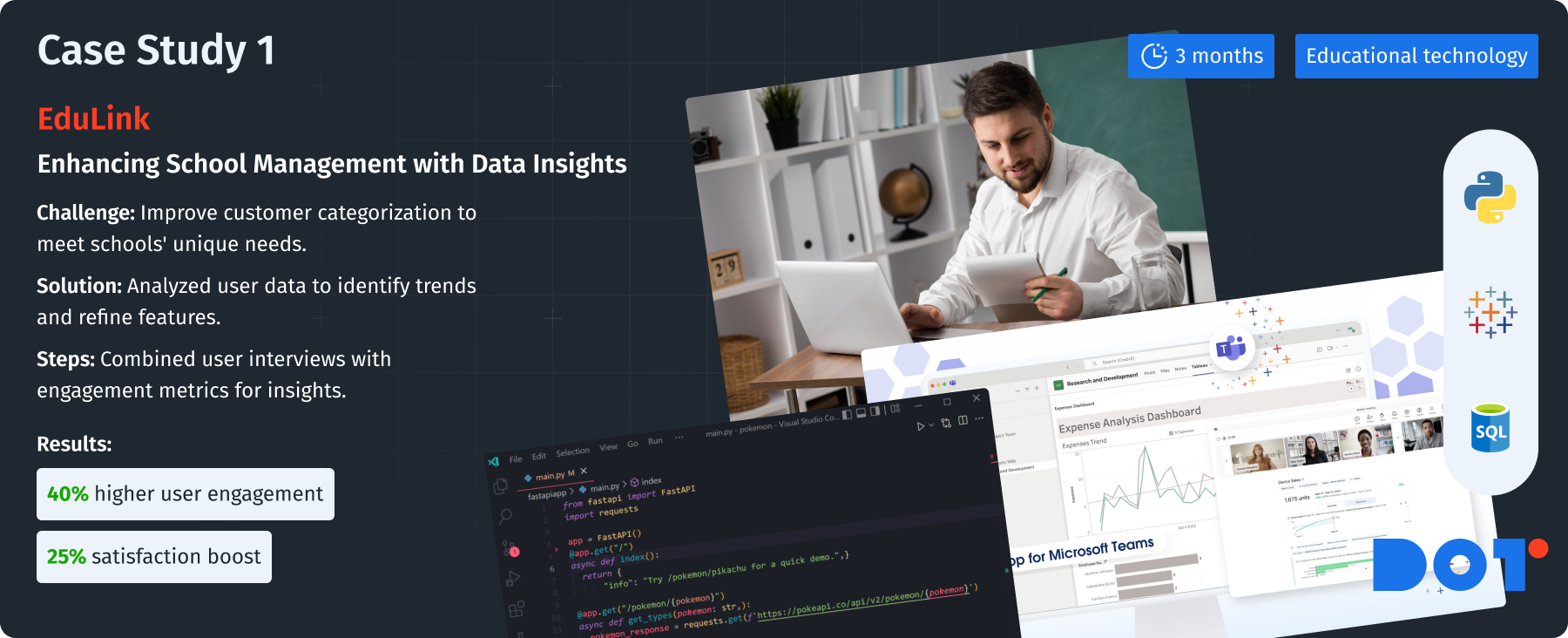
- Company Background: EduLink creates software for schools. They want to use data better to manage student information.
- Challenge: They needed to improve how they categorized customers so they could meet schools’ different needs.
- Solution Description: They hired a data analytics firm to understand user preferences by analyzing data patterns.
- What They Did: They collected data on how schools used their software to find trends.
- How They Did It: By using both user interviews and engagement metrics, they learned what features schools needed.
- Team Composition: They hired 1 data analyst, 1 project manager, and 2 software engineers to implement the analytics.
- Project Duration: The project lasted around 3 months.
- Technologies Used: Analysts used SQL for data handling, Python for modeling, and Tableau for visualization.
- Results: EduLink saw a 40% increase in user engagement and a 25% rise in satisfaction—thanks to better decision-making from data.
LittleLives
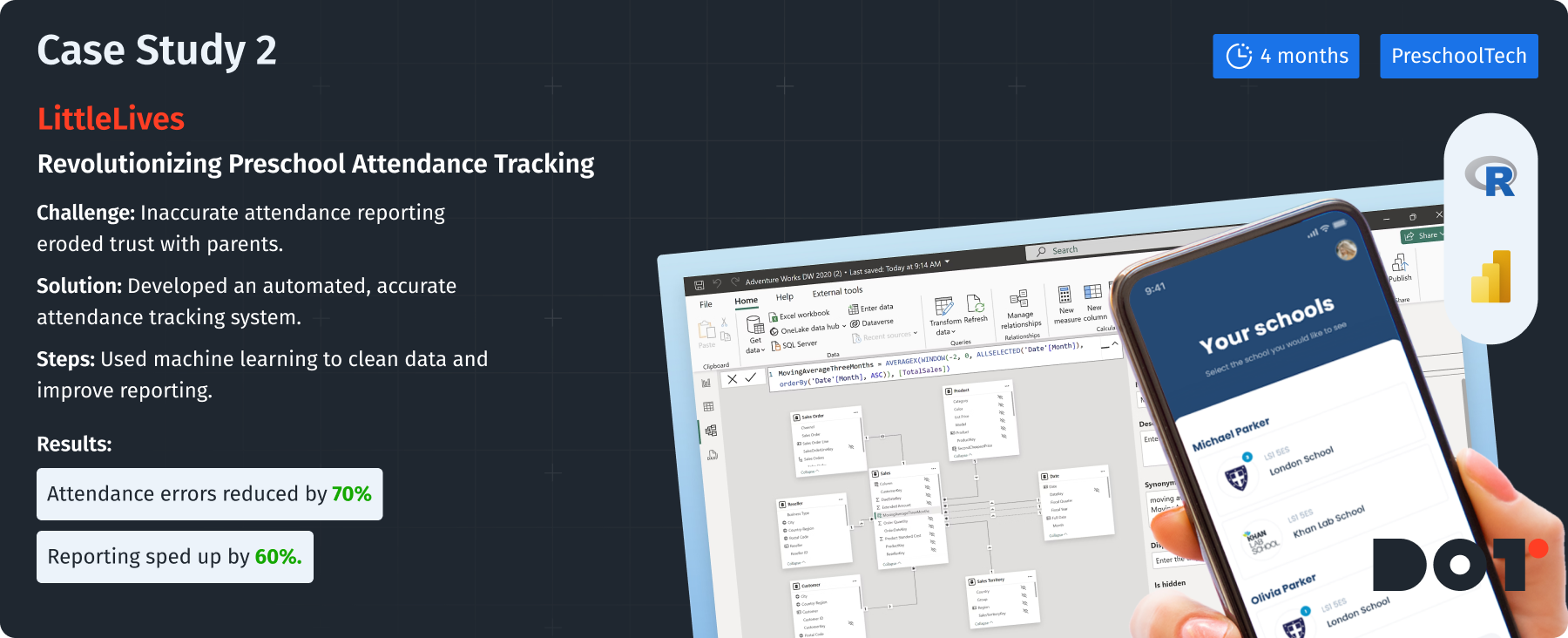
- Company Background: LittleLives provides software for preschools to manage tasks and communicate with parents.
- Challenge: They had issues with accurate attendance reporting, which caused trust issues with parents.
- Solution Description: They worked with analysts to build a better attendance tracking system.
- What They Did: They collected attendance data for three months to find and fix errors in reporting.
- How They Did It: They used machine learning to automate data cleaning and make attendance reports accurate.
- Team Composition: 2 data scientists worked with 1 UX designer and 1 software developer to improve user experience.
- Project Duration: This project took about 4 months to complete.
- Technologies Used: They used R for data analysis and Power BI for visualization.
- Results: LittleLives cut attendance errors by 70%, and reporting speed improved by 60%, leading to better satisfaction among parents.
10. Summary
The cost of data analytics services can differ greatly based on factors like project complexity, business size, and pricing plans. Understanding these factors allows you to make informed decisions. As you consider costs versus potential gains, remember to calculate the estimated ROI—it can help you see how data can transform your business. Always check what services are offered in any contract and watch for hidden costs.
Want to See How This Applies to Your Business? Schedule a Free 20-minute Consultation with One of Our Experts
If you still have questions about data analytics costs, consider reaching out for a consultation. Our experts can customize insights for your unique business needs, showing how analytics can strategically drive your success.
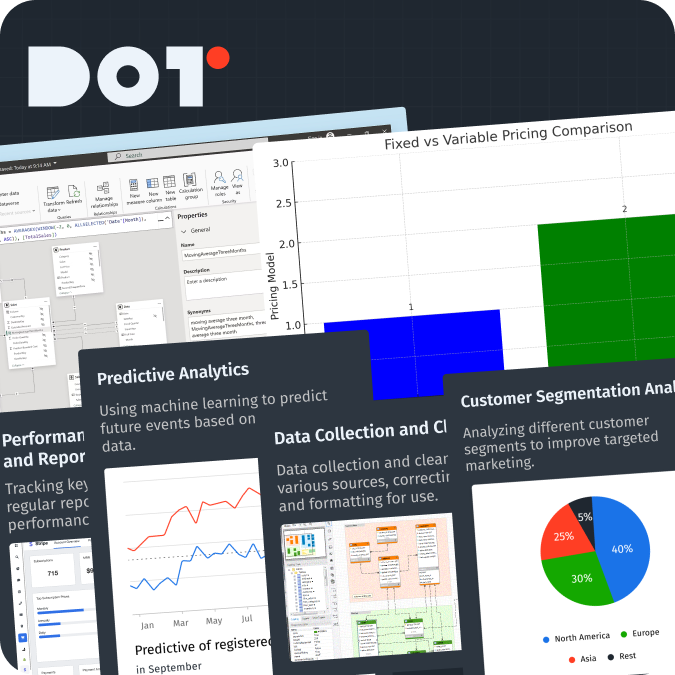



























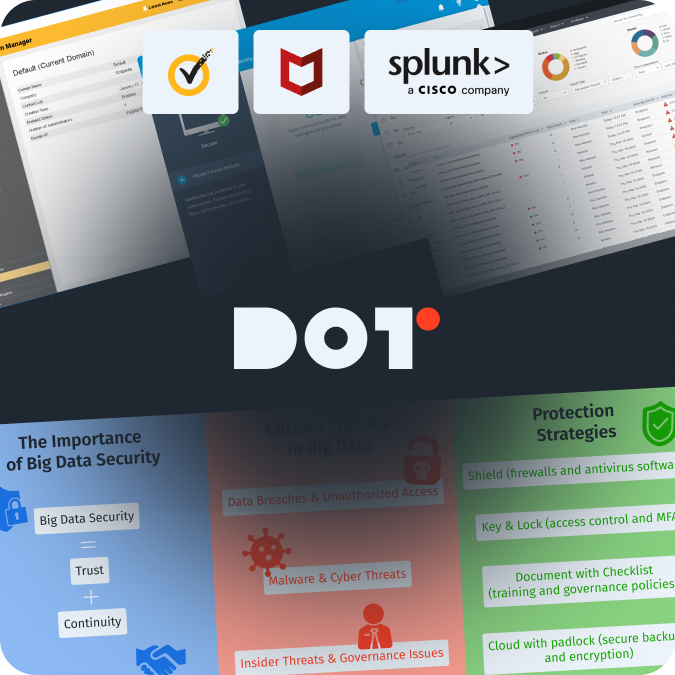
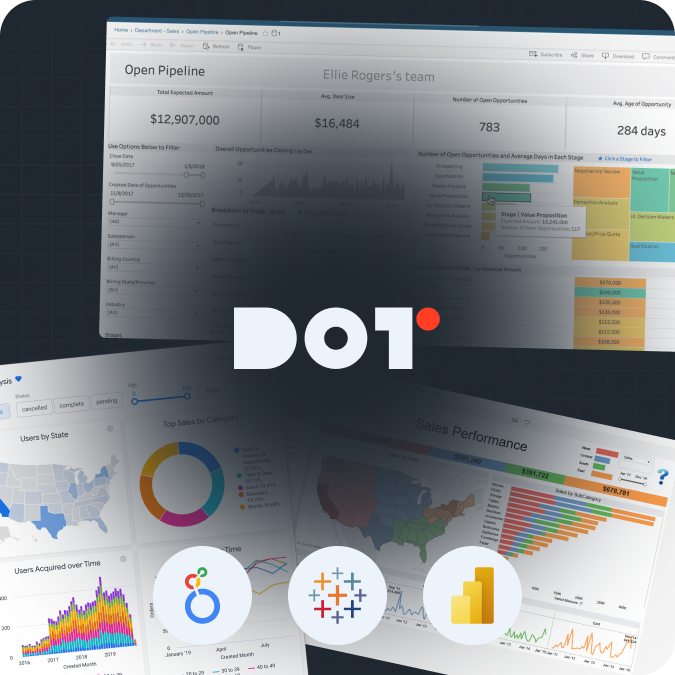
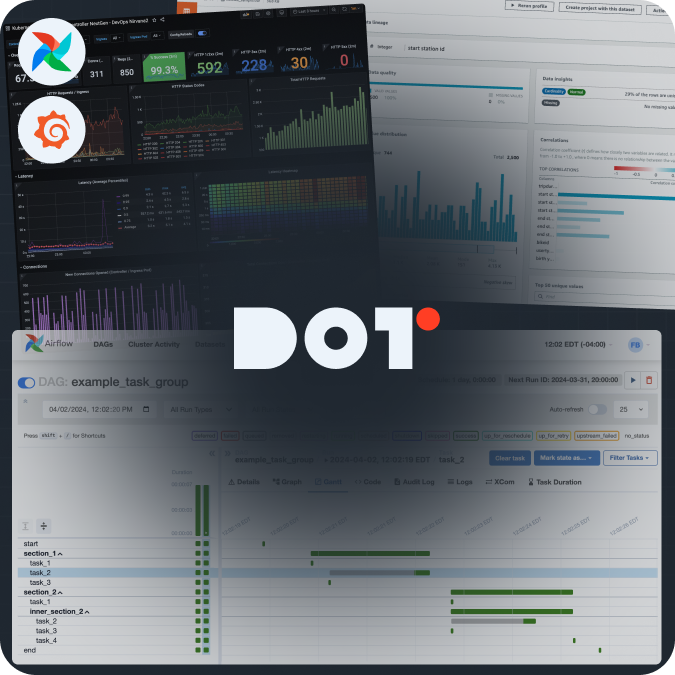
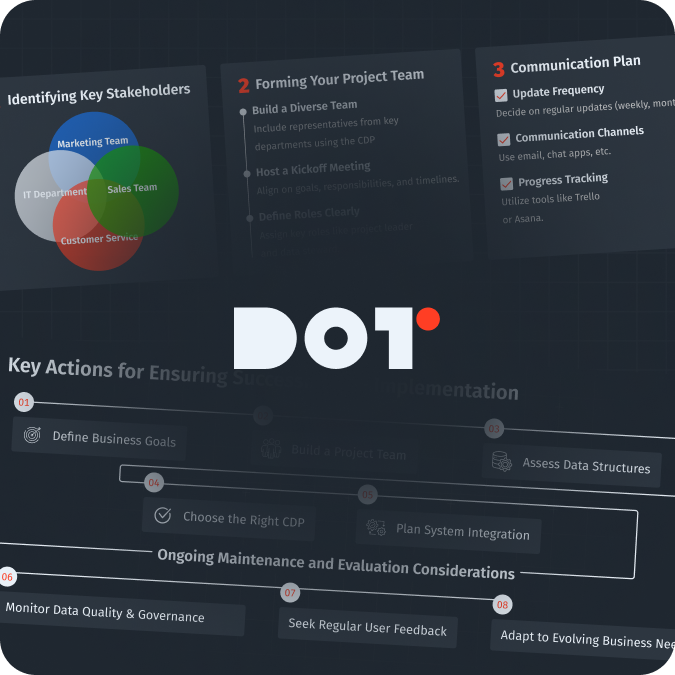

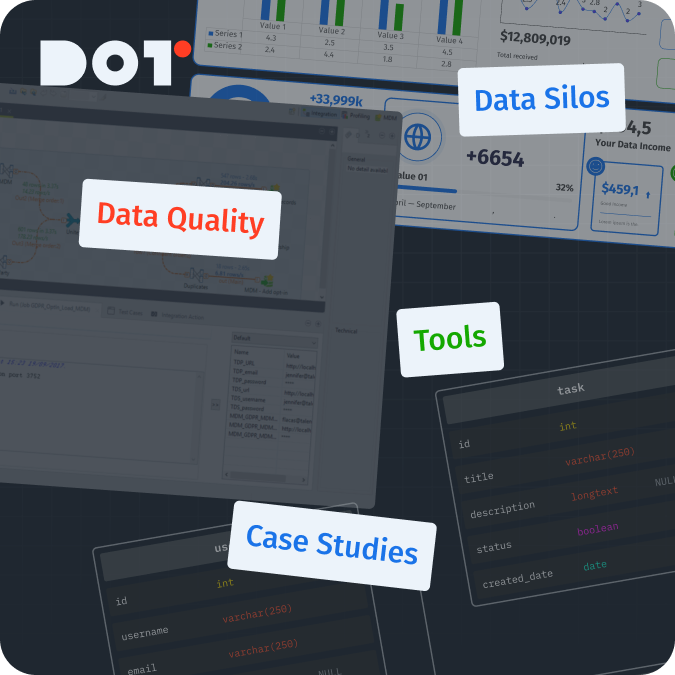
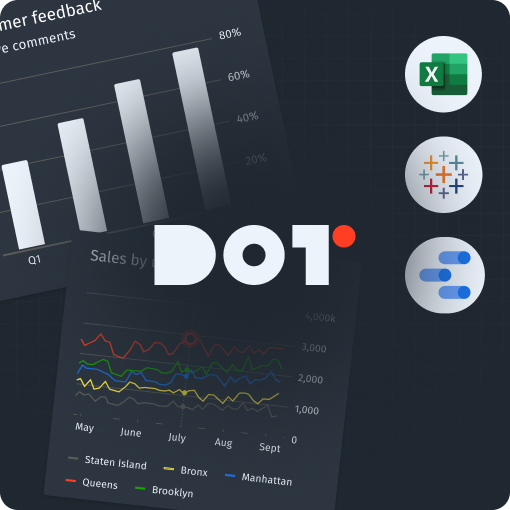

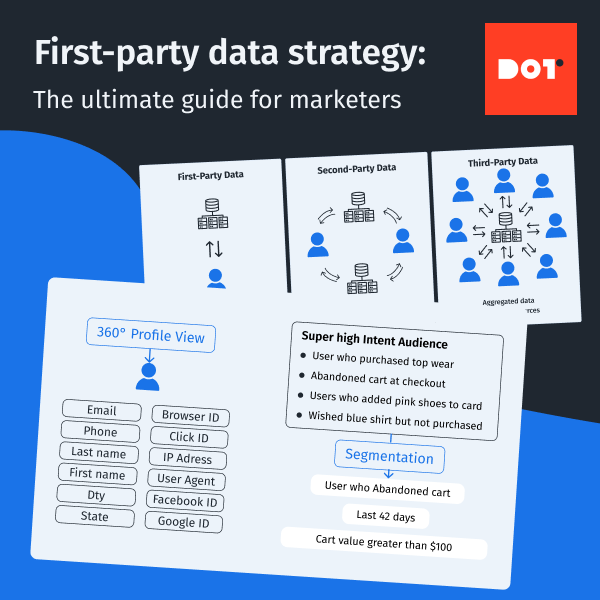
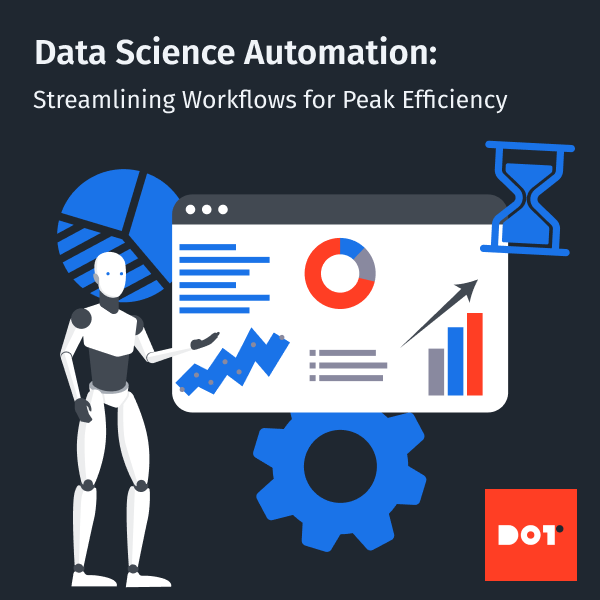
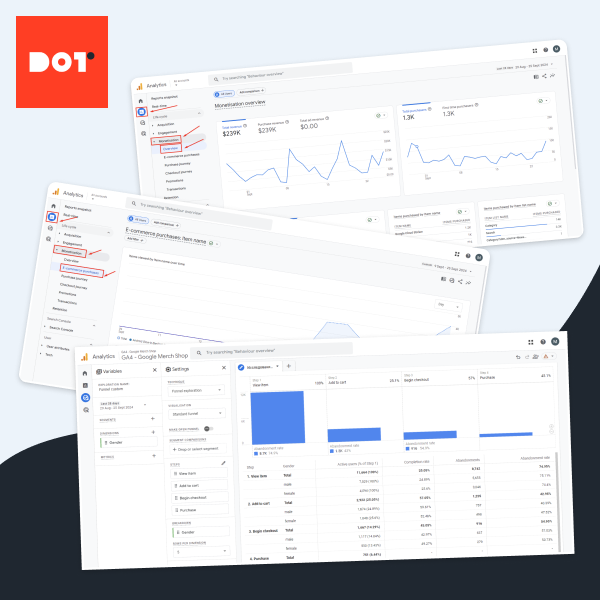
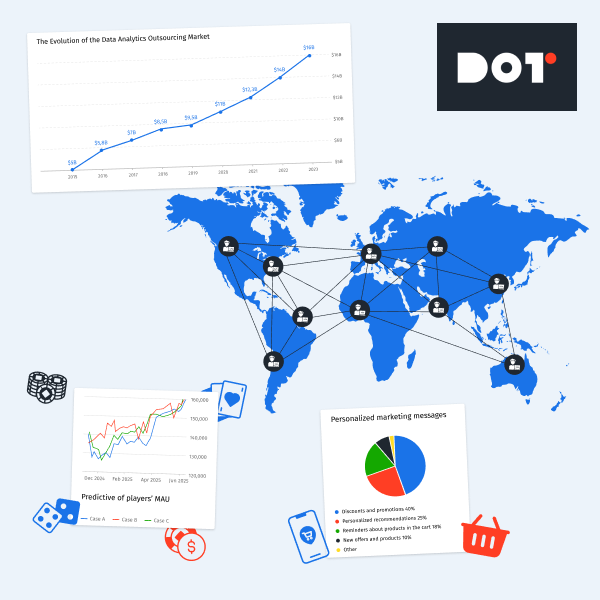
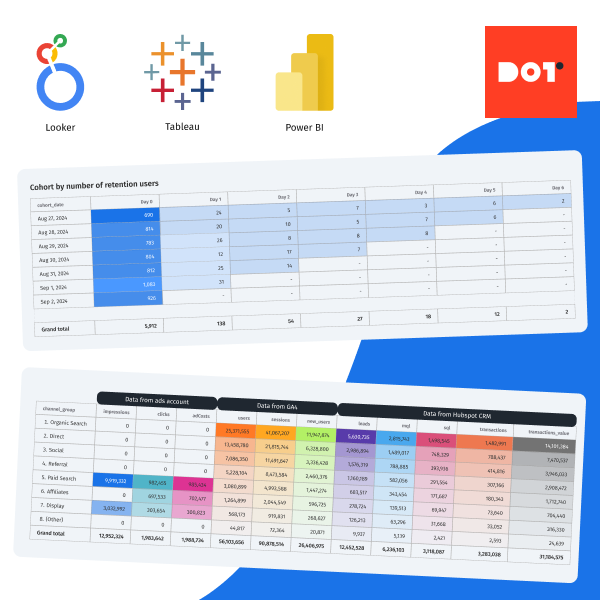
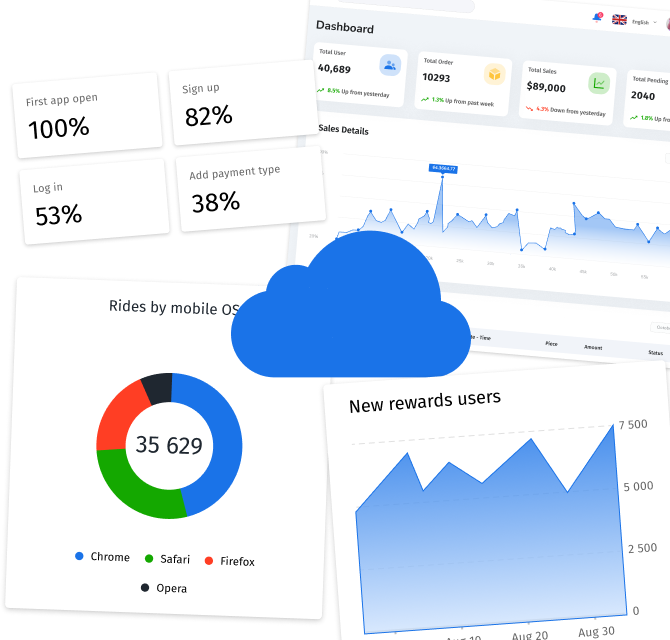
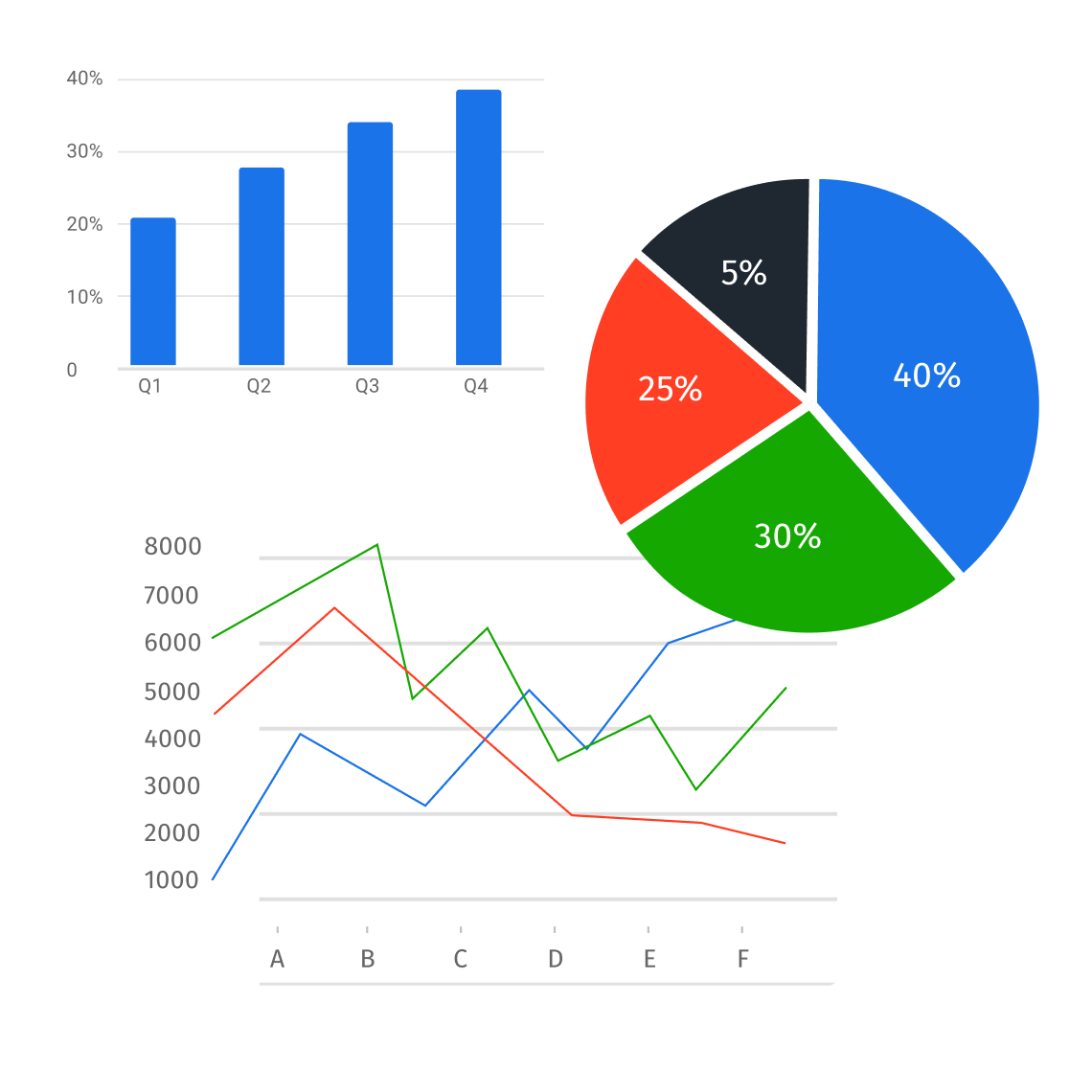
Leave a Reply